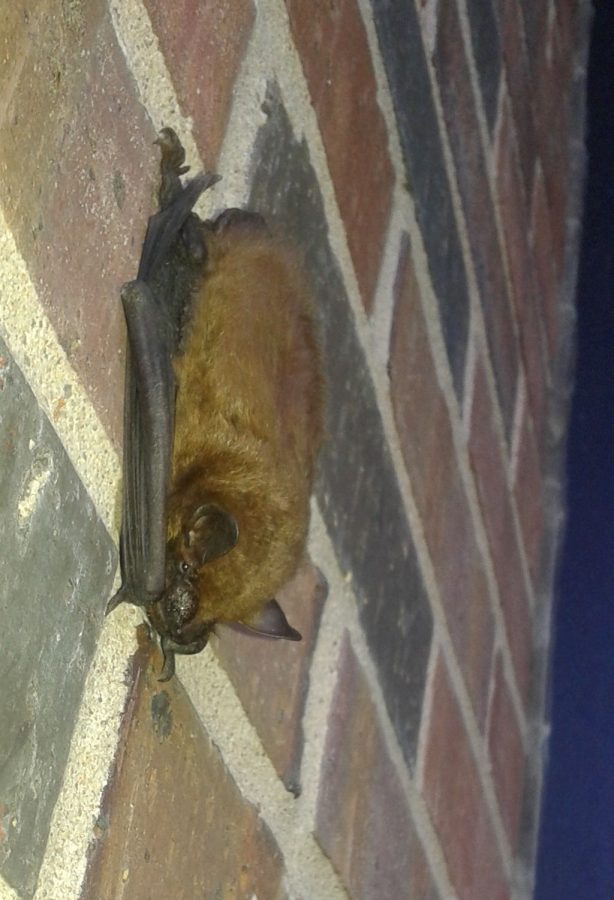Bat spotted on side of campus building
A bat spotted hanging on the side of Lindquist Hall this afternoon.
A bat was spotted on campus this afternoon, hanging on the side of Lindquist Hall.
Bats roost in trees, caves or under loose tree bark during the daytime, but some prefer to roost in or around buildings, according to information from the Kansas State Extension Wildlife Management.
Bats can eat 600 to 1200 mosquito-sized insects every hour, benefiting humans.
People should not attempt to handle bats. They are not aggressive. According to the Nebraska extension office, less than one-half of 1 percent of bats have rabies.
Rabies is the most important public health hazard associated with bats, the extension office said, but its effect has been exaggerated. Whether or not the bat is infected, a bat will not attack when molested but will bite defensively if handled.
“The presence of bats in the area or neighborhood is not detrimental. Bats provide many more benefits than most people realize,” the Kansas State extension office says on its website.
“Never pick up a bat without wearing thick leather gloves,” the website says. “Like most wildlife, bats will bite in self-defense.”
It is not clear at this time if the bat is still on the side of the building.

Chance Swaim was the Editor in Chief of The Sunflower from fall 2017 to spring 2018.
Swaim was a graduate student in the English Department working...











Krystal Iseminger • Oct 12, 2016 at 2:05 pm
Bats will often swoop down and drink out of swimming pools at night if the pool lights are turned off. It is fascinating to watch!